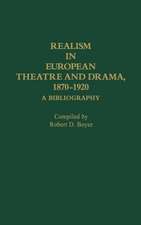Philip Glass: Trilogy Sonata for Piano
Compozitor Philip Glassen Limba Engleză Paperback – 30 iun 1999
| Toate formatele și edițiile | Preț | Express |
|---|---|---|
| Paperback (3) | 118.49 lei 3-5 săpt. | +13.14 lei 7-13 zile |
| CHESTER MUSIC – 31 dec 1899 | 118.49 lei 3-5 săpt. | +13.14 lei 7-13 zile |
| CHESTER MUSIC – dec 2014 | 150.30 lei 3-5 săpt. | +30.93 lei 7-13 zile |
| Hal Leonard Publishing Corporation – apr 2010 | 179.39 lei 3-5 săpt. | +16.43 lei 7-13 zile |
Preț: 97.97 lei
Nou
Puncte Express: 147
Preț estimativ în valută:
18.75€ • 19.48$ • 15.57£
18.75€ • 19.48$ • 15.57£
Carte indisponibilă temporar
Doresc să fiu notificat când acest titlu va fi disponibil:
Se trimite...
Preluare comenzi: 021 569.72.76
Specificații
ISBN-13: 9780711991415
ISBN-10: 0711991413
Pagini: 24
Dimensiuni: 224 x 295 x 5 mm
Greutate: 0.12 kg
Editura: Wilhelm Hansen
ISBN-10: 0711991413
Pagini: 24
Dimensiuni: 224 x 295 x 5 mm
Greutate: 0.12 kg
Editura: Wilhelm Hansen
Descriere
Descriere de la o altă ediție sau format:
THE TWENTY ETUDES FOR PIANO were composed during the years from 1991 to 2012. Their final configuration into Book 1 and Book 2 was determined by the music itself in the course of its composition.
Book 1 (Etudes 1-10) had a twin objective - to explore a variety of tempi, textures and piano techniques. At the same time it was meant to serve as a pedagogical tool by which I would improve my piano playing. In these two ways, Book 1 succeeded very well. I learned a great deal about the piano and in the course of learning the music, I became a better player.
New projects came along and interrupted the work on the Etudes for several years. Perhaps for that reason, when I took up work with the Etudes again I found the music was following a new path. Though I had settled questions of piano technique for myself in Book 1, the music in Book 2 quickly began to suggest a series of new adventures in harmony and structure.
In this way, Books 1 and 2, taken together, suggest a real trajectory that includes a broad range of music and technical ideas.
In the end, the Etudes are meant to be appreciated not only by the general listener, but especially by those who have the ability and patience to learn, play and perform the music themselves.
THE TWENTY ETUDES FOR PIANO were composed during the years from 1991 to 2012. Their final configuration into Book 1 and Book 2 was determined by the music itself in the course of its composition.
Book 1 (Etudes 1-10) had a twin objective - to explore a variety of tempi, textures and piano techniques. At the same time it was meant to serve as a pedagogical tool by which I would improve my piano playing. In these two ways, Book 1 succeeded very well. I learned a great deal about the piano and in the course of learning the music, I became a better player.
New projects came along and interrupted the work on the Etudes for several years. Perhaps for that reason, when I took up work with the Etudes again I found the music was following a new path. Though I had settled questions of piano technique for myself in Book 1, the music in Book 2 quickly began to suggest a series of new adventures in harmony and structure.
In this way, Books 1 and 2, taken together, suggest a real trajectory that includes a broad range of music and technical ideas.
In the end, the Etudes are meant to be appreciated not only by the general listener, but especially by those who have the ability and patience to learn, play and perform the music themselves.



















